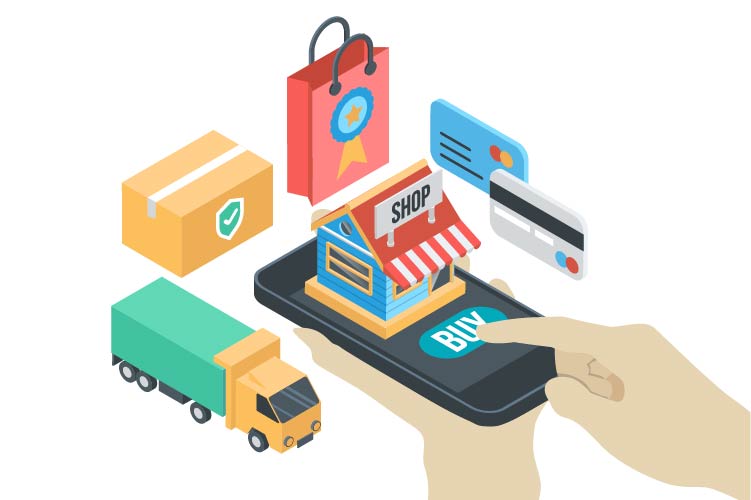Is retail dead?

Absolutely not, it is evolving very fast in recent years. The most important points of this evolution focus on the customer experience, invest in staff training and implement an integrated multi-channel strategy.
The current context is made up of many and very different ways of selling and buying, which are created and adapted and adjusted according to political, economic and cultural systems.
Today, with the increase of technologies, the rise of e-commerce has given customers options and so the challenge is to create and succeed in spreading retail models, both online and offline, which are even closer to the wishes of the post-modern society of these decades.
This means that retailers need to adapt their business strategies to meet customer demands and remain relevant. They need to become more digitally-focused and improve their customer experience.
The change is fundamental for any business, entity or human being and even more for traditional retail in order to offer users the benefits of the web including convenience, speed, and variety connecting to customers at brick-and-mortar stores can increase engagement, loyalty, and sales.
But first, let’s see what retail is. According to Shopify:
“A retail sale occurs when a business sells a product or service to an individual consumer. The transaction itself can occur through a number of different sales channels, such as online, in a brick-and-mortar storefront, through direct sales, or direct mail. The aspect of the sale that qualifies it as a retail transaction is that the end user is the buyer”.
Then the retail is a B2C strategy which purpose is to increase the sell out in the retail shops traditionally. Over the years, online retailing has become more and more established, and it is the type of e-commerce used to reach the end customer directly.
Other new sales methods are temporary shops or pop up stores used to launch usually a new product or to assert the brand identity, for a short time, in prestigious locations, and vending machines where customers can pick up various types of products.
The future of fashion retail: big data
Nowadays, the most useful shopping tool is the smartphone. In fact, according to Digital Marketing Institute in the UK alone, around 5.6 million people are using their smartphones to shop and by 2020 this figure will likely grow to a staggering 20 million people.
The biggest and most important change in customer experience is big data. Big data allows retailers to collect and analyze large amounts of data from sources such as social media, the company’s website, and store transactions, on a daily basis.
This helps retail stores to forecast trends that can have an impact on its business and enables them to offer their customers the best possible shopping experience. A retail can use that information to offer discounts on those brands to their existing and potential customers by increasing sales. Big data could also be used to establish better pricing.
Some stores managed to significantly boost revenue via making smaller adjustments to the retail store’s layout trough big data because they help with display colors, product placement, display styles, scheduling, and staffing.
Big Data would be useful for retailers outside the customer relationship because they could be checked out what region a new product will be delivered to.
In addition, big data could help find the best relationships and even more useful for the management of the relationship and negotiations.

Clothing industry
The most evolving sectors certainly that of clothing due to the increase of e-commerce online specialized in the selling of clothes, shoes, and accessories. Brick and mortar aren’t going away anytime soon also because younger consumers, millennials and Gen Z, prefer the brick and mortar experience.
A satisfying customer experience is determined by a captivating display of products, a structured internal layout, the ability to try out clothes before buying them, and the speed of payment.
The last change in the clothing industry, indeed, provides no dressing rooms, no boxes to pay: customers can touch clothes and see them closely, but the purchase is done exclusively online with the choice between home delivery and pick-up in the store.
In addition, the mirrors become interactive and can recognize the garments by proposing the catalog with the sizes to choose from and any accessories to complete the look.
Another big news coming from the ZARA colossus is the click and collect, which is a dedicated section within each sales point for the collection of online orders in record time.
Food industry

The easy availability of products and the availability of staff are important aspects to consider in the food sector.
One of the most important giants in the e-commerce sector is certainly Amazon, which is trying to revolutionize the food market and in particular the way of shopping.
After the acquisition of Whole Foods, a US food company, Amazon opened its first Amazon Go in Seattle, a new kind of store with no checkout required.
The logic of this revolutionary supermarket is to enter by using the Amazon Go App, take products and go without both lines and checkout.
The receipt arrives via the app, and the employees are not cashiers: they give assistance, help customers find the products and check the age for the purchase of alcohol.
This experience is made possible by the different types of technologies like computer vision, sensor fusion, and deep learning. These tools automatically detect when products are taken from or returned to the shelves and keeps track of them in a virtual cart.
Conclusion
In conclusion, shaping the future of retail connected, intelligent and automated technologies will be essential in the future of retail for a better customer experience.
We are now facing a veritable revolution in the world of American retail, for the time being, which will inevitably involve all sectors and other countries.
The consumer will always be more demanding and will require ever more speed and attention to detail.
Retailers, thanks to these new technologies, not only improve the shopping experience but can access a large amount of data to analyze the behavior and habits of their customers.
Moreover, thanks to these data, retailers can make informed decisions and invest in digital tools able to improve customer engagement, creating a future based on consumer needs.
P.S. Thanks for reading this far. This blog article is made with 💓 and we hope you enjoyed it. If the article has been helpful, please continue to follow us for other content, we will do our best. 💪









